This article was medically reviewed by Luba Lee, FNP-BC, MS and by wikiHow staff writer, Megaera Lorenz, PhD. Luba Lee, FNP-BC is a Board-Certified Family Nurse Practitioner (FNP) and educator in Tennessee with over a decade of clinical experience. Luba has certifications in Pediatric Advanced Life Support (PALS), Emergency Medicine, Advanced Cardiac Life Support (ACLS), Team Building, and Critical Care Nursing. She received her Master of Science in Nursing (MSN) from the University of Tennessee in 2006.
There are 17 references cited in this article, which can be found at the bottom of the page.
This article has been viewed 29,594 times.
Abdominal pain can be agonizingly uncomfortable and it has many potential causes. If you’re dealing with this unpleasant condition, you can get some relief by applying heat, staying hydrated, and sticking to mild foods until your symptoms start to ease up. If your abdominal pain is severe, sudden, or persistent, see your doctor to diagnose and treat the underlying cause. While not all types of abdominal pain can be easily prevented, there are measures you can take to protect yourself from some of the most common causes.
Steps
Managing Abdominal Pain at Home
-
1Put a hot water bottle on your abdomen. If you’re experiencing abdominal cramps, a little gentle heat can sometimes bring relief. Lie down and place a hot water bottle against the painful part of your abdomen. Make sure to wrap the bottle in a layer of cloth, such as a towel, to prevent burns.[1]
- You can also use an electric heating pad to get relief, but take care not to lie down on top of the pad or fall asleep with it on your body. To reduce the risk of fires, don’t leave a turned-on heating pad unattended.
-
2Soak in a warm bath to get relief. Like a hot water bottle or heating pad, a warm bath can bring soothing relief and help relax your muscles. Make sure the water is warm, but not hot enough to scald your skin. Soak for about 20 minutes.[2]
- If you wish, you can add some Epsom salt to the bath. This ingredient may help soothe pain and relieve inflammation.
Advertisement -
3Drink warm water and other clear fluids if you can keep them down. Dehydration and abdominal pain often go hand-in-hand, especially if you’re also vomiting or having diarrhea.[3] Keep yourself hydrated and soothe your pain by sipping water or other clear fluids, such as apple juice or broth.
- If you’re feeling nauseated and having trouble keeping fluids down, try eating ice chips or a popsicle. If you can’t keep any fluids down, go to the emergency room.
- Avoid drinking ice-cold water as this may worsen your abdominal pain.
-
4Avoid drinking coffee, tea, or alcohol. These beverages can irritate your stomach and intestines and make your pain worse.[4] Additionally, caffeine and alcohol can make your stomach produce more acid, leading to heartburn or reflux pain.[5]
- If your abdominal pain is caused by indigestion, herbal teas made with ginger or mint may be helpful. Reach for one of these as an alternative to black tea.
-
5Stick to the BRAT diet until you feel better. If your abdominal pain is caused by indigestion, try eating mild foods, such as bananas, rice, applesauce, and toast (BRAT). This diet is especially helpful if you’ve been vomiting or having diarrhea.[6]
- If you’re vomiting, it may be best to avoid solid foods altogether until you can consistently keep fluids down. Once you feel like you’re ready, try eating some saltine crackers or a little plain toast.
Did you know? Bananas are a key part of the BRAT diet. Not only are they easy to digest, but they also contain potassium, which tends to become depleted easily if you are vomiting or having diarrhea.[7]
-
6Talk to your doctor about using antacids for pain related to indigestion. If your abdominal pain is caused by excess stomach acids, antacids may be helpful. Talk to your doctor if you feel like you need to use antacids every day or if you’re not sure what’s causing your abdominal pain.[8]
- Keep in mind that some forms of antacid, such as those containing magnesium, can cause diarrhea.
-
7Ask your doctor about using pain relief medications. For some types of abdominal pain, over-the-counter pain medications can help. For example, if you’re dealing with pain caused by a problem with your stomach or intestines, acetaminophen can be helpful. For period cramps or other types of pelvic and lower abdominal pain, NSAIDs, such as ibuprofen or naproxen, may be better.[9]
- If you’re not sure what’s causing your abdominal pain, talk to your doctor before trying any pain killers.
- Using the wrong medication could make your pain worse. For example, if the pain is coming from your stomach, aspirin or ibuprofen could cause further irritation.
- Be aware that NSAIDS, such as ibuprofen, can also cause abdominal pain.
Getting Medical Treatment
-
1See your doctor if your abdominal pain is severe or lasts several days. If your abdominal pain lasts for more than 2 or 3 days or doesn’t respond to any home treatments, make an appointment to see your doctor. This may be a sign of a more serious condition. Get emergency medical care if your abdominal pain is severe or accompanied by any of these symptoms:<refhttps://www.nhsinform.scot/illnesses-and-conditions/stomach-liver-and-gastrointestinal-tract/stomach-ache-and-abdominal-pain</ref>
- Fever
- Blood in your stools
- Nausea and vomiting that doesn’t let up or prevents you from keeping down fluids
- A yellowish tint to your skin, eyes, or gums
- Rapid weight loss
- Swelling or tenderness in your abdomen
-
2Give your doctor information about your symptoms. When you see your doctor, tell them how long the pain has been going on and when it started, and provide as many other details as you can. Since different types of abdominal pain are associated with different causes, this information will help them narrow down the cause of your pain and come up with a good treatment plan.[10]
- Tell your doctor if the pain is accompanied by other symptoms, such as fever, nausea, or vomiting.
- Explain where the pain is located (for example, on the right side of your lower abdomen or just above your belly button) and what it feels like (e.g., a dull ache or sharp, stabbing pains).
- Tell them if you have recently been around anyone else with similar symptoms.
- Discuss any other health conditions you may have and how you are managing them.
Abdominal pain can have many causes. Some of the most common reasons for stomach pain include indigestion, gas, acid reflux, constipation, the stomach flu, irritable bowel syndrome (IBS), gastritis (inflammation of the stomach lining), menstrual cramps, a pulled abdominal muscle, or a urinary tract infection.[11]
-
3Allow your doctor to perform an exam. During your visit to the doctor’s office, they will wish to take your vitals and conduct a physical exam. They may ask you to lie down on the examining table so they can feel your abdomen to find obvious lumps, localize the source of your pain, or determine if you are tender to the touch.[12] They may also recommend further tests, such as:
- A blood test to check for signs of infection or enzyme imbalances
- X-rays, an ultrasound, or other imaging tests to look for visual evidence of the problem
- A pelvic or rectal exam
- Urine tests to check for a urinary tract infection or kidney stones
-
4Follow your doctor’s home care instructions carefully. Your doctor’s treatment approach and home care instructions will depend on what’s causing your abdominal pain. They may prescribe medications to manage the pain or to treat the underlying condition that’s causing the pain. They may also recommend that you rest, drink plenty of fluids, or avoid eating certain types of foods.[13]
- Take any medications exactly as prescribed by your doctor. Don’t hesitate to contact your doctor’s office if you have any concerns or questions.
Preventing Abdominal Pain
-
1Make note of foods that cause abdominal pain and avoid them. If you notice that you tend to get abdominal pain after eating, start keeping a food journal and make note of what you eat and how you feel afterwards. Look through the journal and try to identify which foods trigger your pain. Try cutting those foods from your diet for a while and see if you feel better. A few common culprits include:
- Acidic foods, such as fruit juices, tomato products, chocolate, and coffee
- Spicy foods, such as hot sauce or chili peppers
- Fatty or greasy foods
- Gluten-containing foods
- Sugary drinks
- Vegetables that cause gas, such as beans, onions, or cabbage
- Dairy products, especially if you are lactose intolerant
Tip: If certain foods trigger abdominal pain or other uncomfortable symptoms, it’s possible that you have a dietary intolerance or sensitivity. If you think this is the case, talk to your doctor. They may recommend eliminating different foods from your diet until you identify the culprit(s).[14]
-
2Eat a healthy, well-balanced diet. A healthy diet is not only easier on your stomach than a poor or imbalanced diet, but it can also improve your overall health and reduce your risk of a variety of conditions that might cause abdominal pain. While dietary needs differ from one person to another, you can probably benefit from a diet that includes:[15]
- Lots of dietary fiber
- A variety of fruits and vegetables
- Lean proteins, such as fish, poultry breast, or legumes
- Healthy fats, like those found in nuts, seeds, fish, and vegetable oils
- Whole grains
- Dairy products, such as milk, yogurt, or cheese
-
3Avoid overeating. Eating too much of any food in one sitting can cause abdominal pain and discomfort. Try to keep your food portion sizes small enough that you are not tempted to eat until you’re uncomfortably full. Eat mindfully and pay attention to your body’s cues that you are no longer hungry.
- If you’re not sure what portion sizes are healthiest for you, talk to your doctor or a dietitian to get some guidelines.
-
4Limit your use of alcohol. Alcohol can upset your stomach. Additionally, drinking too much of it on a regular basis can put you at risk of developing more serious conditions that also cause abdominal pain, such as pancreatitis.[16] Try to limit your alcohol intake to no more than 1 drink per day if you are a woman and no more than 2 drinks per day if you are a man.
- If you are dependent on alcohol, talk to your doctor about the best way to quit.
-
5Try to go to the bathroom regularly. Constipation is a common culprit for abdominal pain. In addition to causing uncomfortable bloating, it can also trap gas inside your belly, leading to sharp pains.[17] To avoid constipation, try to go to the bathroom as soon as you feel the urge. Waiting can ultimately make it harder for you to have a bowel movement. You can also prevent constipation by:[18]
- Gradually incorporating more fiber-rich foods, such as fruits, vegetables, and whole grains, into your diet
- Exercising regularly
- Drinking at least 8 glasses of water every day
-
6Practice stress-relieving techniques. Mental and emotional stress can affect more than just your mood. Stress can also cause a variety of physical symptoms, including abdominal pain. Additionally, if you have an underlying health condition that causes abdominal pain, stress might make it worse. While you can’t eliminate stress from your life entirely, you can help manage it by:
- Practicing relaxation techniques like yoga, meditation, or deep breathing
- Getting exercise
- Spending time with friends and family
- Doing relaxing and enjoyable activities like reading, playing games, or doing arts and crafts
-
7Get 7-9 hours of good-quality sleep each night. Getting plenty of sleep can help your body heal from the stresses of the day and minimize a variety of unpleasant physical symptoms, including abdominal pain. Go to bed early enough each night that you can get 7-9 hours of sleep (or 8-10, if you’re a teen). You can also improve the quality of your sleep by:
- Turning off all bright screens at least half an hour before bed
- Establishing a relaxing bedtime routine, such as taking a warm shower, doing some light stretches, or reading a chapter from a book
- Keeping your room comfortable, dark, and quiet
-
8Use good hygiene when handling and preparing food. Preparing food improperly can increase your risk of getting a painful gastrointestinal infection. Always wash your hands and any food preparation surfaces and utensils both before and after making your food. Cook your food properly and store it appropriately when you’re done.[19]
- Washing fresh produce before you eat it can not only remove harmful pesticides, but may also reduce your risk of ingesting dangerous bacteria that can cause abdominal infections.[20]
-
9Stay away from people with the stomach flu if possible. Many forms of stomach flu (gastroenteritis) are very contagious. If you know someone who has stomach flu symptoms, such as abdominal pain, diarrhea, nausea, or vomiting, try to limit your contact with them until they feel better.[21] If you must be in close contact with someone who has the stomach flu, you can protect yourself by:
- Washing your hands frequently with soap and warm water
- Not sharing eating utensils or other personal items (such as towels) with the sick person
- Cleaning any surfaces that the sick person has touched (such as doorknobs, faucets, and counters)
References
- ↑ https://www.livescience.com/890-study-heating-pads-relieve-internal-pain.html
- ↑ https://www.betterhealth.vic.gov.au/health/conditionsandtreatments/abdominal-pain-in-adults
- ↑ https://www.ncbi.nlm.nih.gov/pubmed/14764254
- ↑ https://www.betterhealth.vic.gov.au/health/conditionsandtreatments/abdominal-pain-in-adults
- ↑ https://www.ncbi.nlm.nih.gov/pubmed/2072799
- ↑ https://familydoctor.org/brat-diet-recovering-from-an-upset-stomach/
- ↑ https://familydoctor.org/brat-diet-recovering-from-an-upset-stomach/
- ↑ https://medlineplus.gov/ency/patientinstructions/000198.htm
- ↑ https://www.nhs.uk/conditions/period-pain/
- ↑ https://www.mountsinai.org/health-library/symptoms/abdominal-pain
- ↑ https://www.nhsinform.scot/illnesses-and-conditions/stomach-liver-and-gastrointestinal-tract/stomach-ache-and-abdominal-pain
- ↑ https://www.betterhealth.vic.gov.au/health/conditionsandtreatments/abdominal-pain-in-adults
- ↑ https://www.betterhealth.vic.gov.au/health/conditionsandtreatments/abdominal-pain-in-adults
- ↑ https://my.clevelandclinic.org/health/diseases/10009-food-problems-is-it-an-allergy-or-intolerance
- ↑ https://www.myplate.gov
- ↑ https://www.ncbi.nlm.nih.gov/books/NBK65575/
- ↑ https://www.hopkinsmedicine.org/health/articles-and-answers/wellbeing/5-reasons-your-stomach-may-hurt
- ↑ https://www.hopkinsmedicine.org/health/healthy-woman/conditions/constipation-causes-and-prevention-tips
- ↑ https://www.nhs.uk/live-well/eat-well/10-ways-to-prevent-food-poisoning/
- ↑ https://extension.umaine.edu/publications/4336e/
- ↑ https://www.cdc.gov/norovirus/about/transmission.html
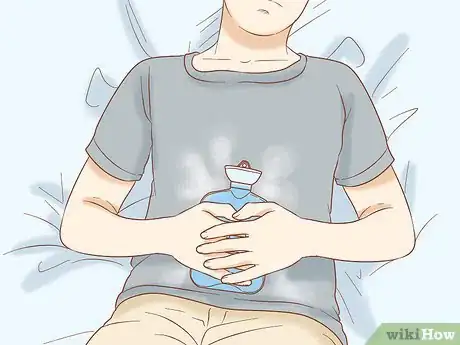


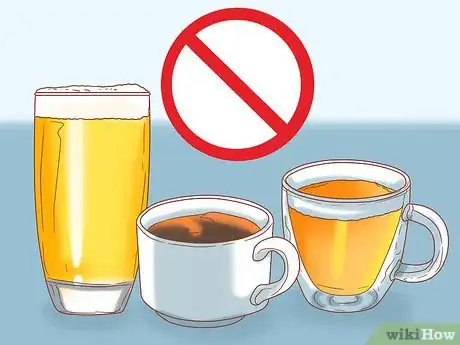
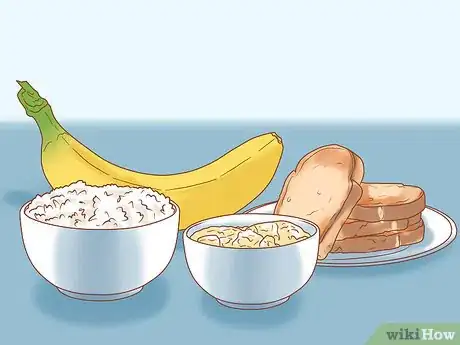

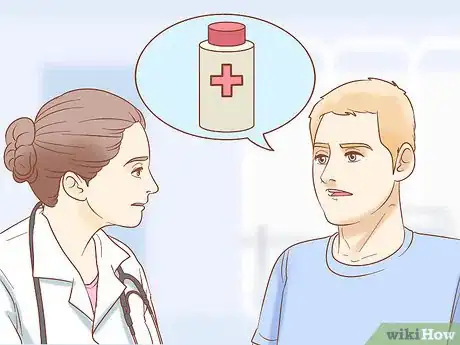

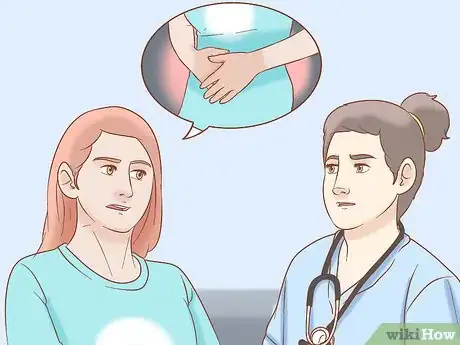

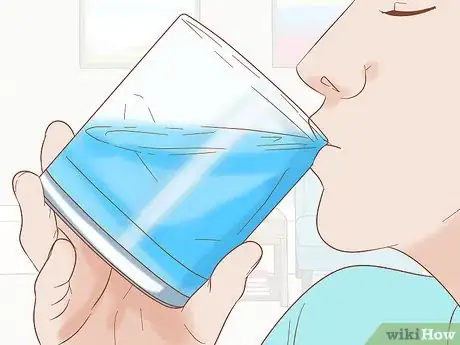
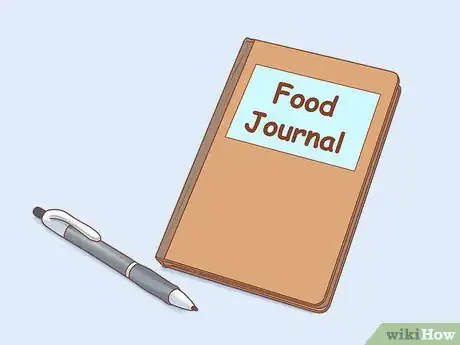

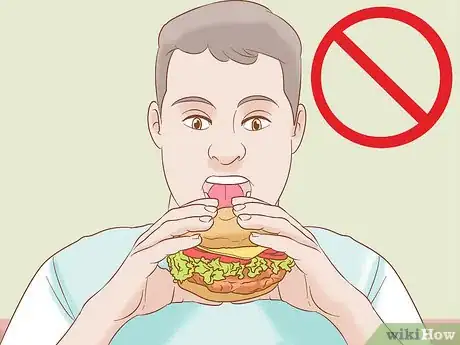


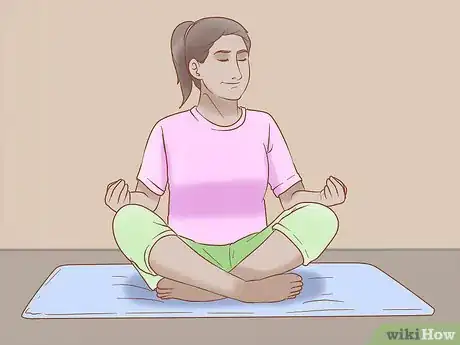















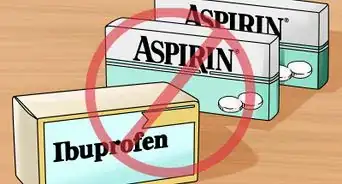









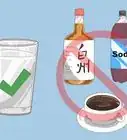





































Medical Disclaimer
The content of this article is not intended to be a substitute for professional medical advice, examination, diagnosis, or treatment. You should always contact your doctor or other qualified healthcare professional before starting, changing, or stopping any kind of health treatment.
Read More...